In Photos: Boeing's Starliner Pad Abort Test Launch
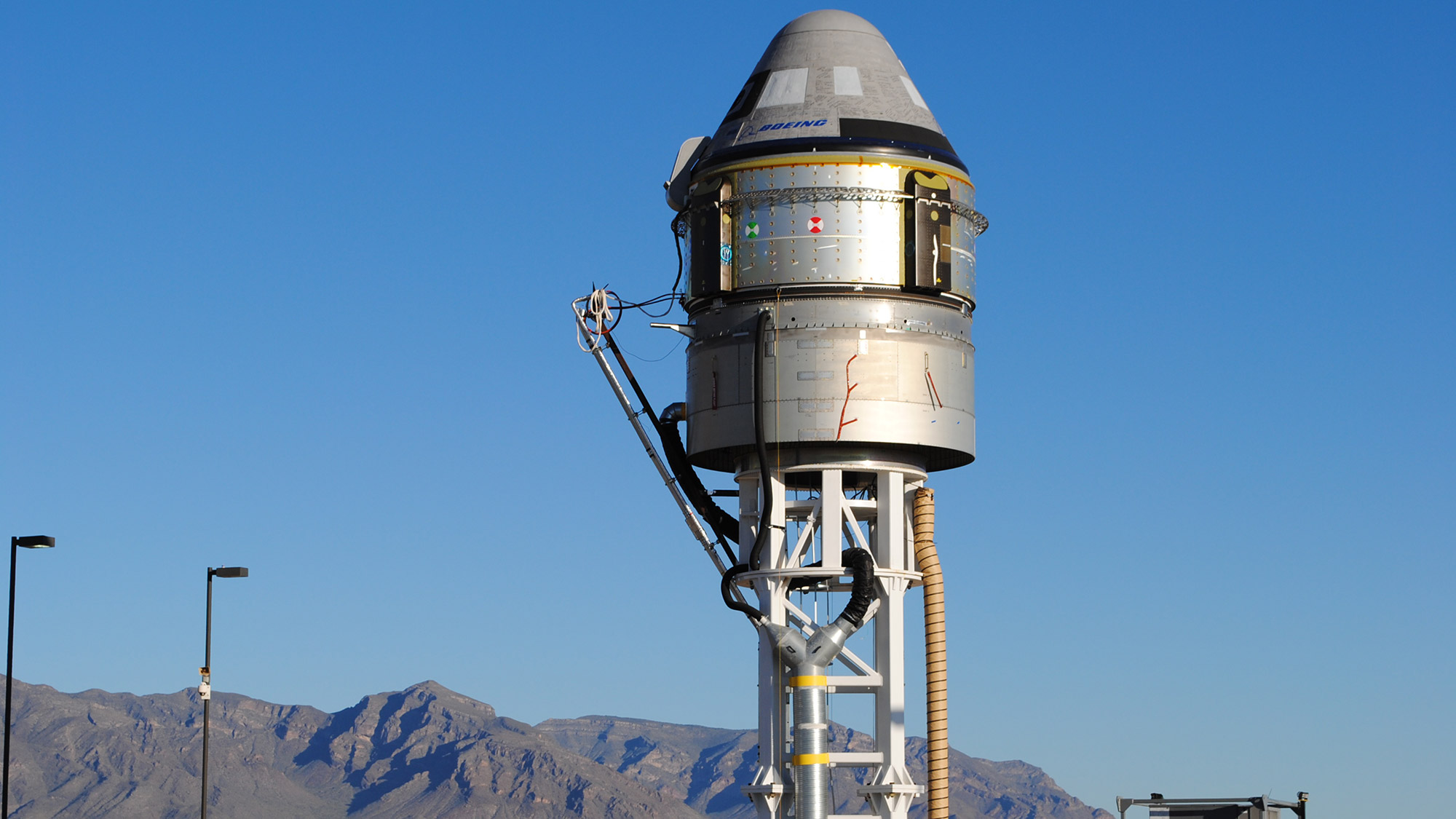
On Monday (Nov. 4), Boeing tested the emergency escape system of its CST-100 Starliner spacecraft in a pad abort test in the desert of New Mexico. It was uncrewed this time, but the spacecraft will soon begin launching astronauts to the International Space Station. See photos of the spacecraft's launch and landing in this gallery. Above, the Starliner capsule sits on top of the test stand at White Sands Missile Range.
Full Story: Boeing Tests Starliner Spacecraft's Launch Abort System for Rocket Emergencies
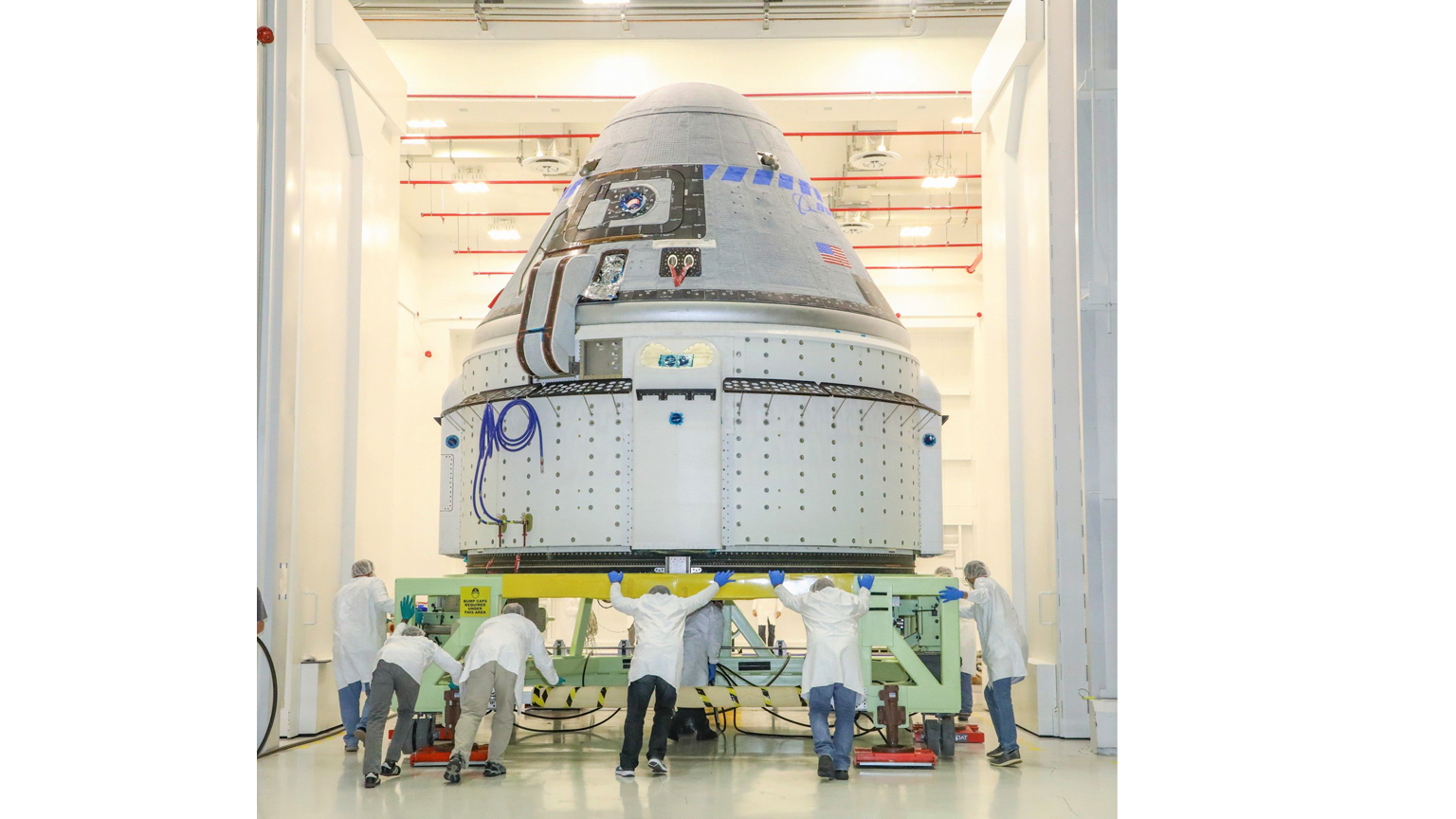
Here, Boeing engineers prepare a CST-100 Starliner crew capsule for a critical pad abort test on Nov. 4, 2019 at the White Sands Missile Range in New Mexico.
The test vehicle was about 16.5 feet tall and included a Starliner crew capsule (top) and its cylindrical service module at bottom. The crew capsule returned to Earth under parachutes and airbags. The service module crashed into the New Mexico desert as planned.
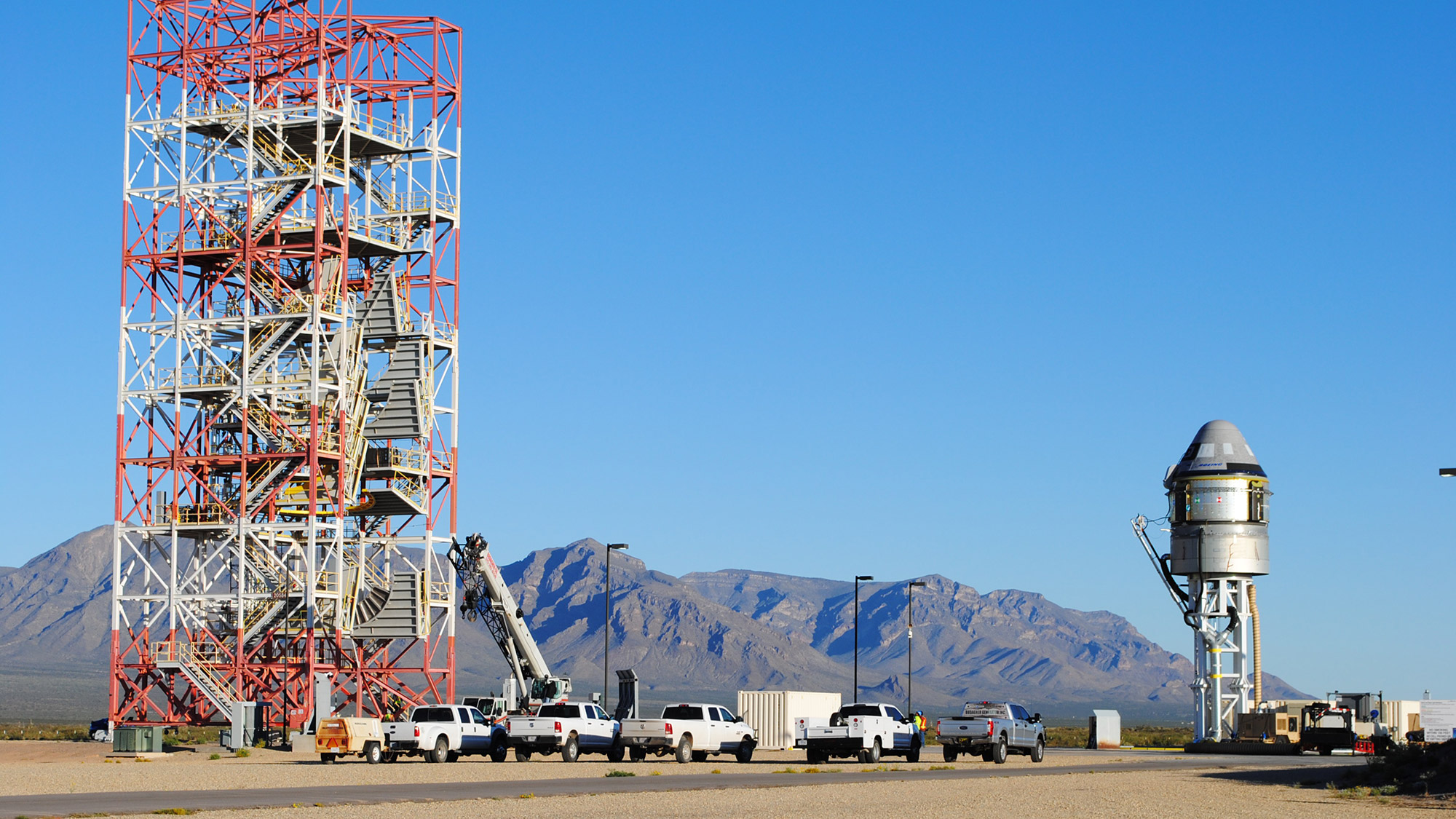
The CST-100 Starliner stands on top of its test stand on Launch Complex 32 at the White Sands Missile Range in New Mexico ahead of the pad abort test. Also attached to the bottom of the capsule is the service module, which supplies the spacecraft's power and propulsion systems.
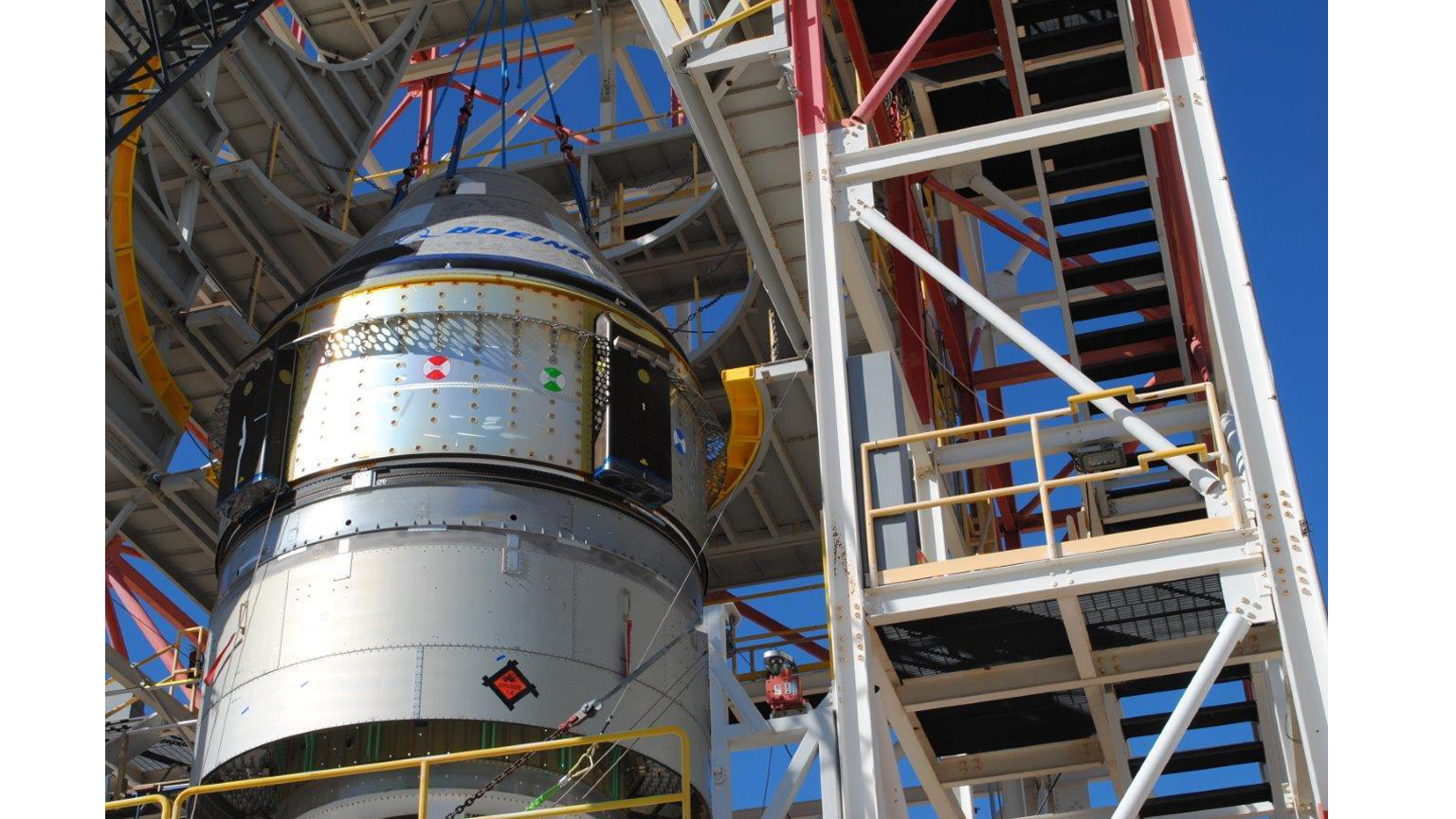
Here's another view of the Boeing's Starliner pad abort test article on the launch pad at the U.S. Army's White Sands Missile Range in New Mexico.
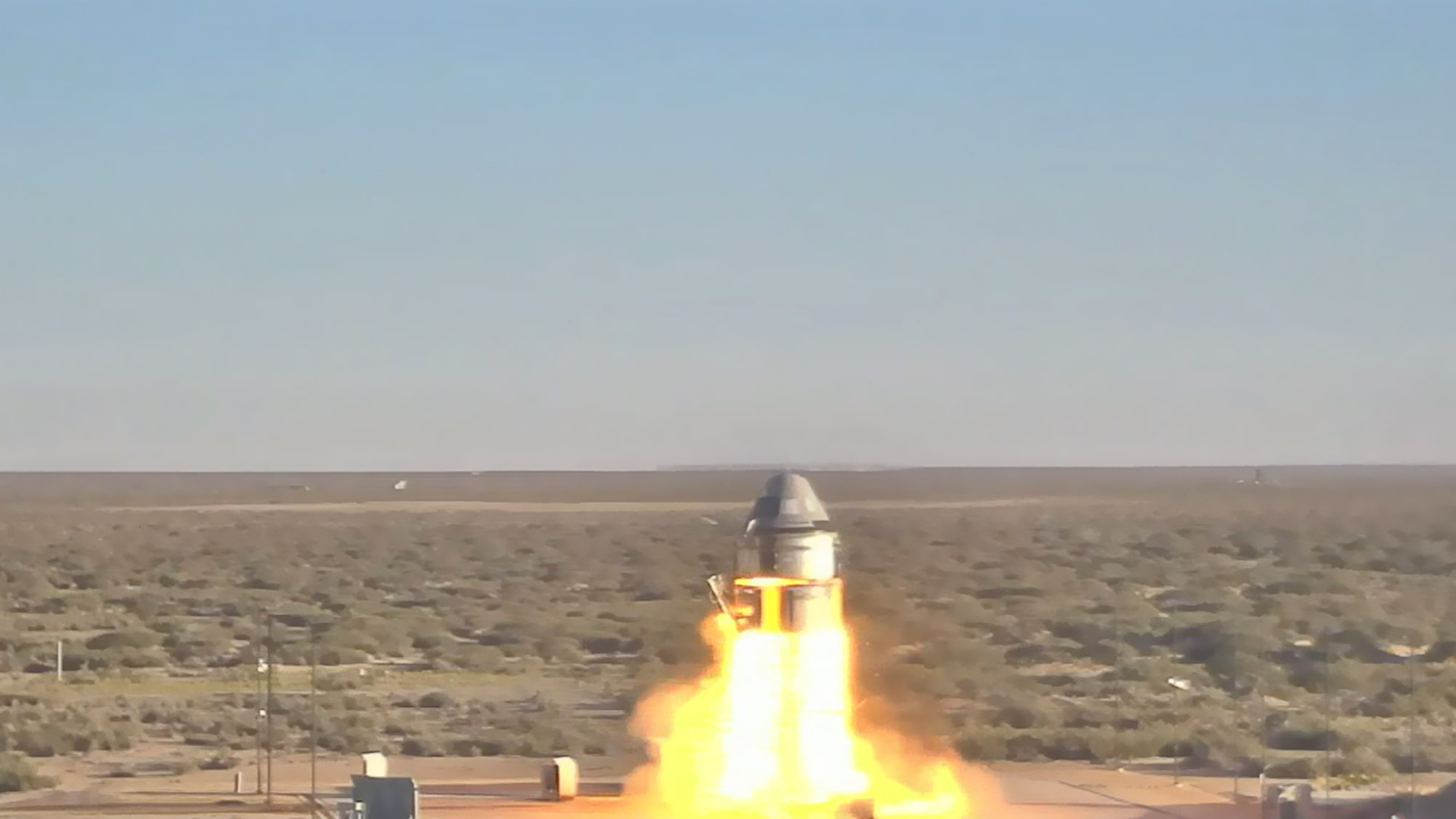
The CST-100 Starliner, with its service module attached, lifts off from Launch Complex 32 at White Sands Missile Range in New Mexico for the pad abort test. The launch occurred on Nov. 4 at 7:15 a.m. local time (9:15 a.m. EST, 1415 GMT).
Related: Boeing CST-100 Starliner: Next-Generation Spaceship
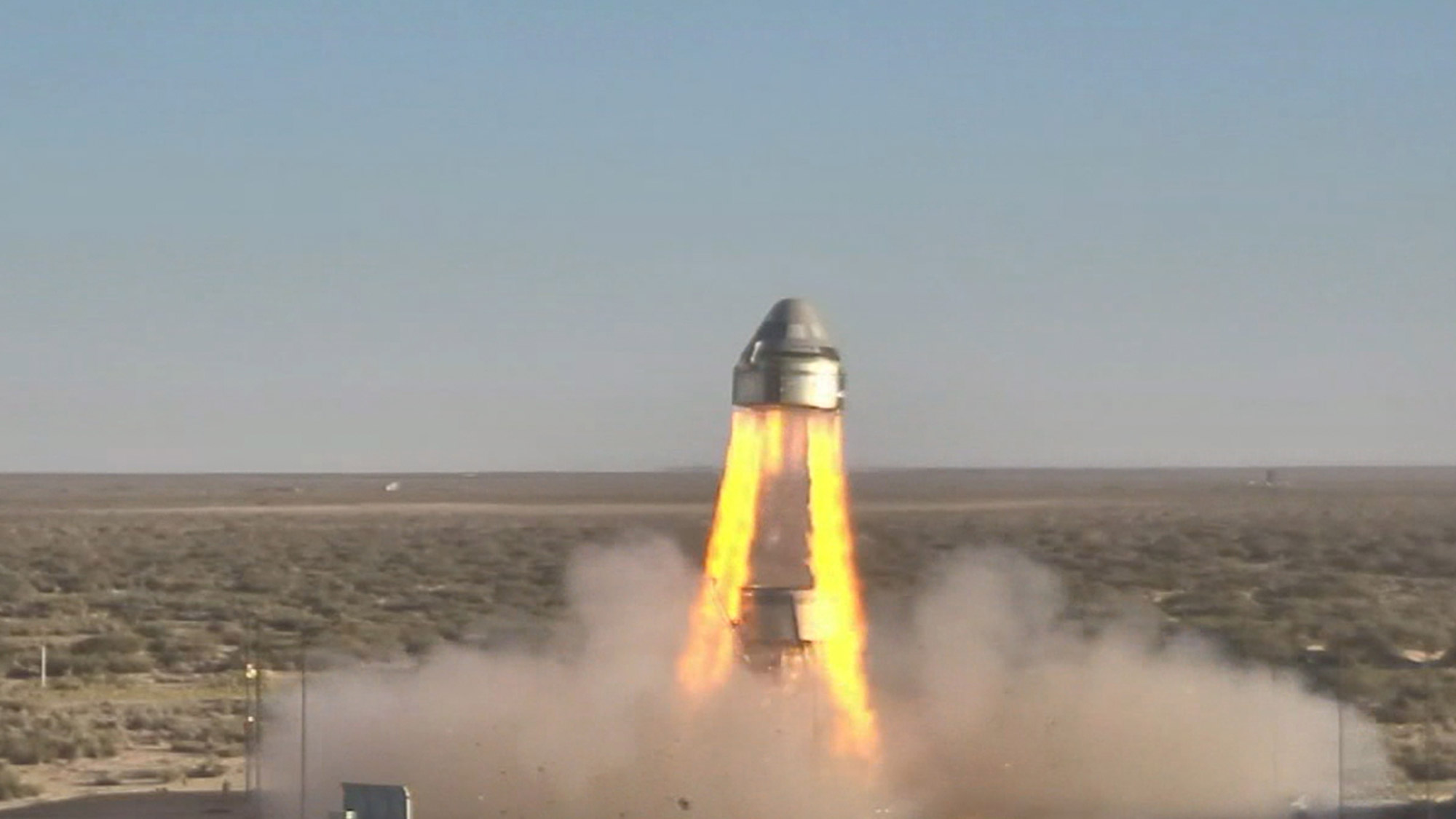
During the pad abort test, the CST-100 Starliner spacecraft reached a speed of about 650 mph (1,046 km/h) in just 5 seconds. If anything were to go wrong with the rocket during liftoff, this abort system would allow the astronauts on board to safely get away from the unstable rocket and float back down to Earth.
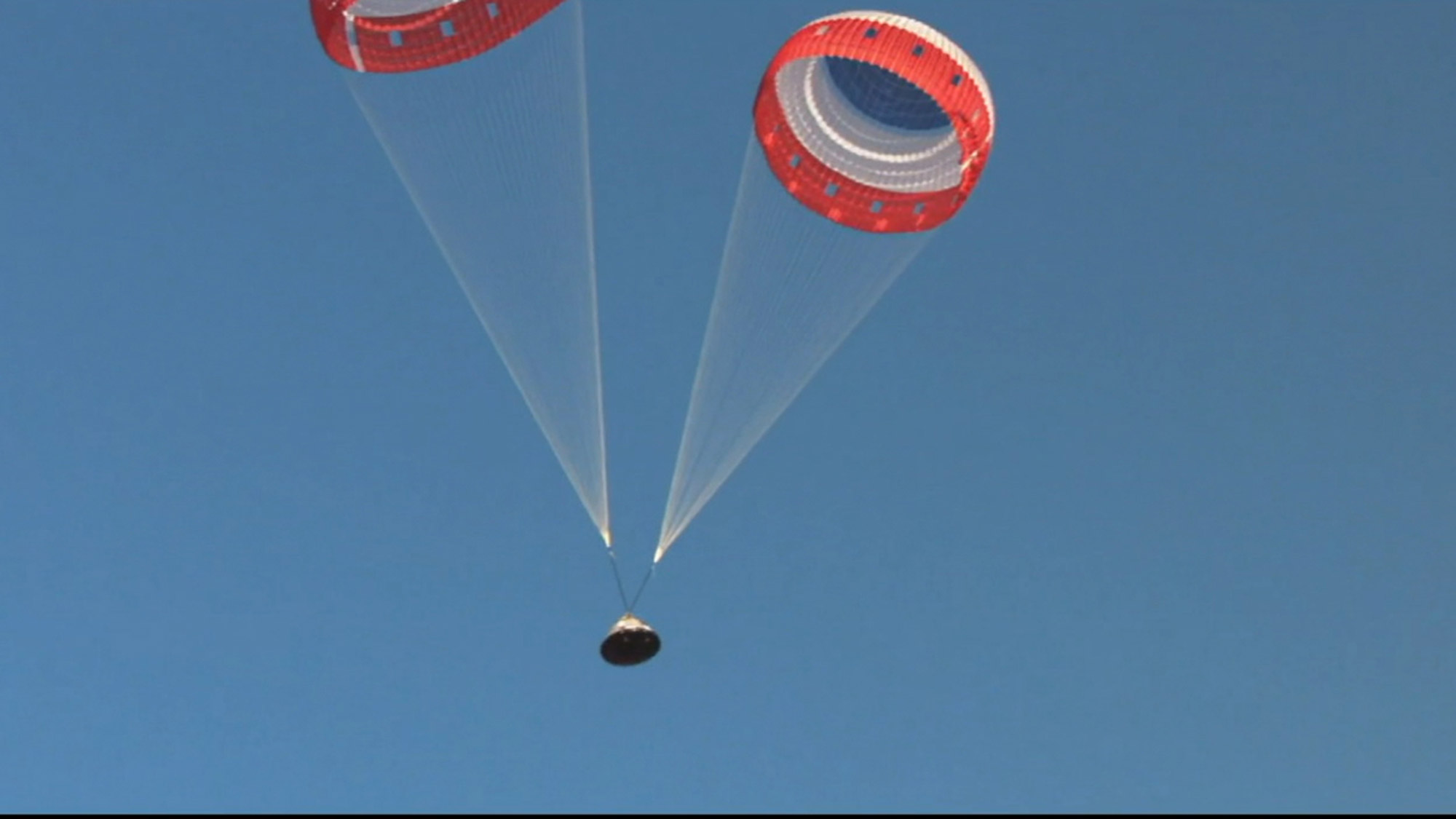
To safely return to Earth, the CST-100 Starliner spacecraft has three sets of parachutes: two drogue parachutes, three pilot parachutes and three main parachutes. Here, two of the three main parachutes have deployed successfully in the pad abort test. Boeing officials said there was a "deployment anomaly" with the third main parachute, but added that "having two of three deploy successfully is acceptable for the test parameters and crew safety."
Related: Parachute Development a Challenge for Commercial Crew
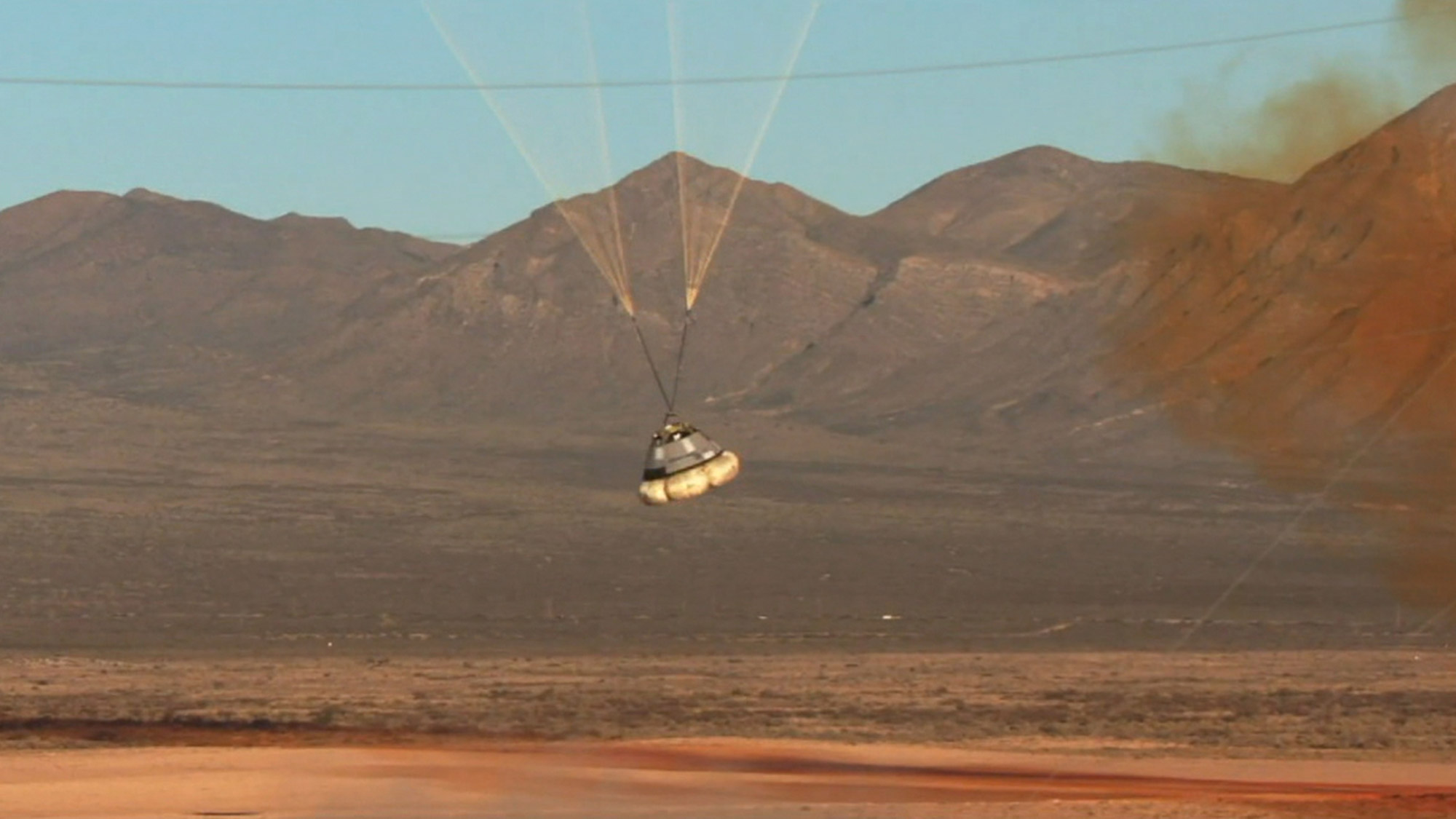
Airbags inflated under the spacecraft to cushion its landing. Although the CST-100 Starliner landed on dry land in New Mexico during the pad abort test, if the emergency abort system were activated during a real launch carrying astronauts from Kennedy Space Center, it would splash down in the Atlantic Ocean.
Related: Here's Why Boeing Used an Inflatable Spaceship to Test 'Starliner' Landing Recovery Plans
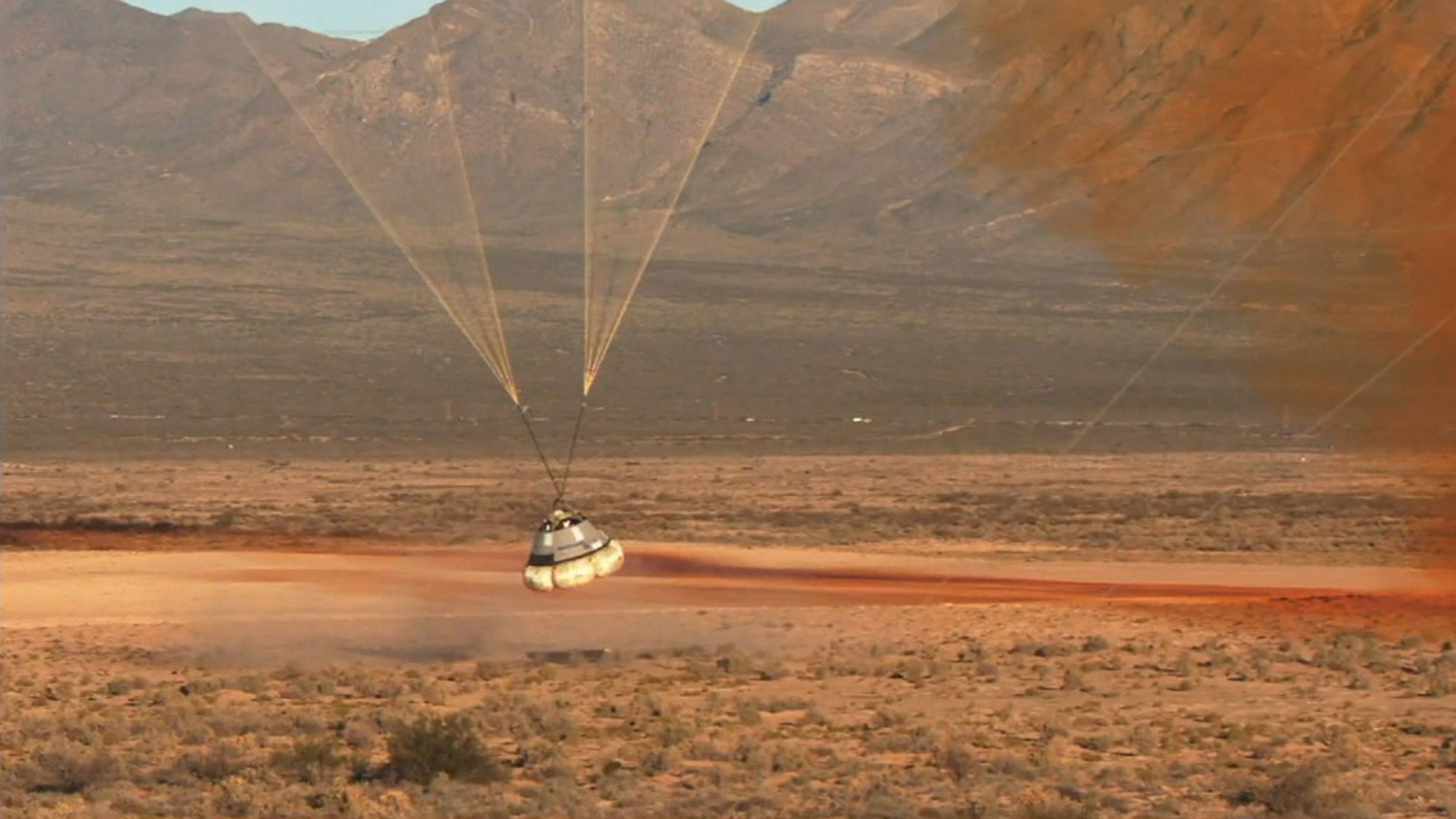
Boeing's CST-100 Starliner, with two of its three main parachutes deployed, floats back down to the New Mexico desert after a (mostly) successful pad abort test.
Related: SpaceX and Boeing Test Parachutes for Future Astronaut Space Taxis
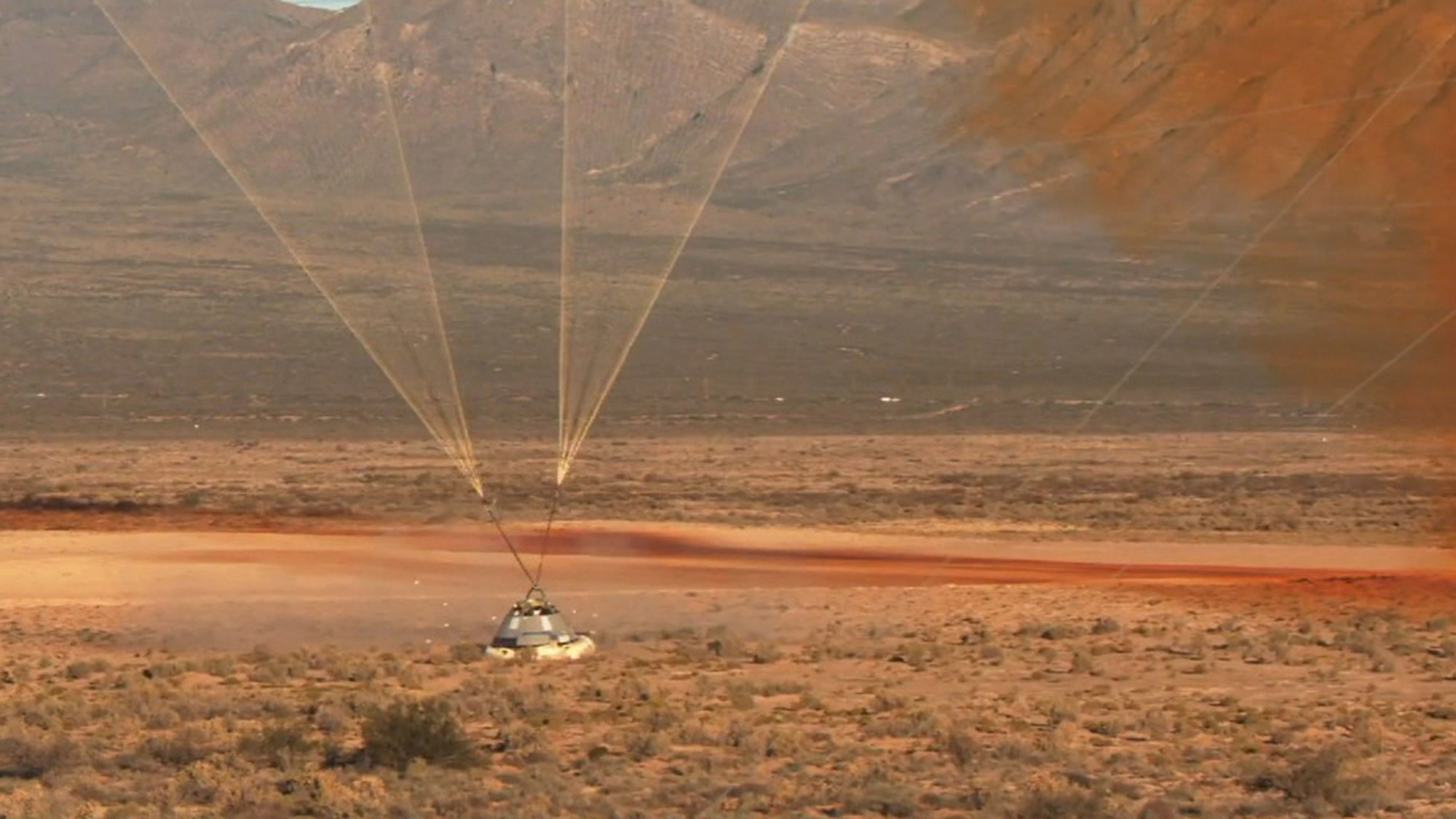
Touchdown! The CST-100 Starliner landed back on Earth a little over one minute after it launched.
Full Story: Boeing Tests Starliner Spacecraft's Launch Abort System for Rocket Emergencies
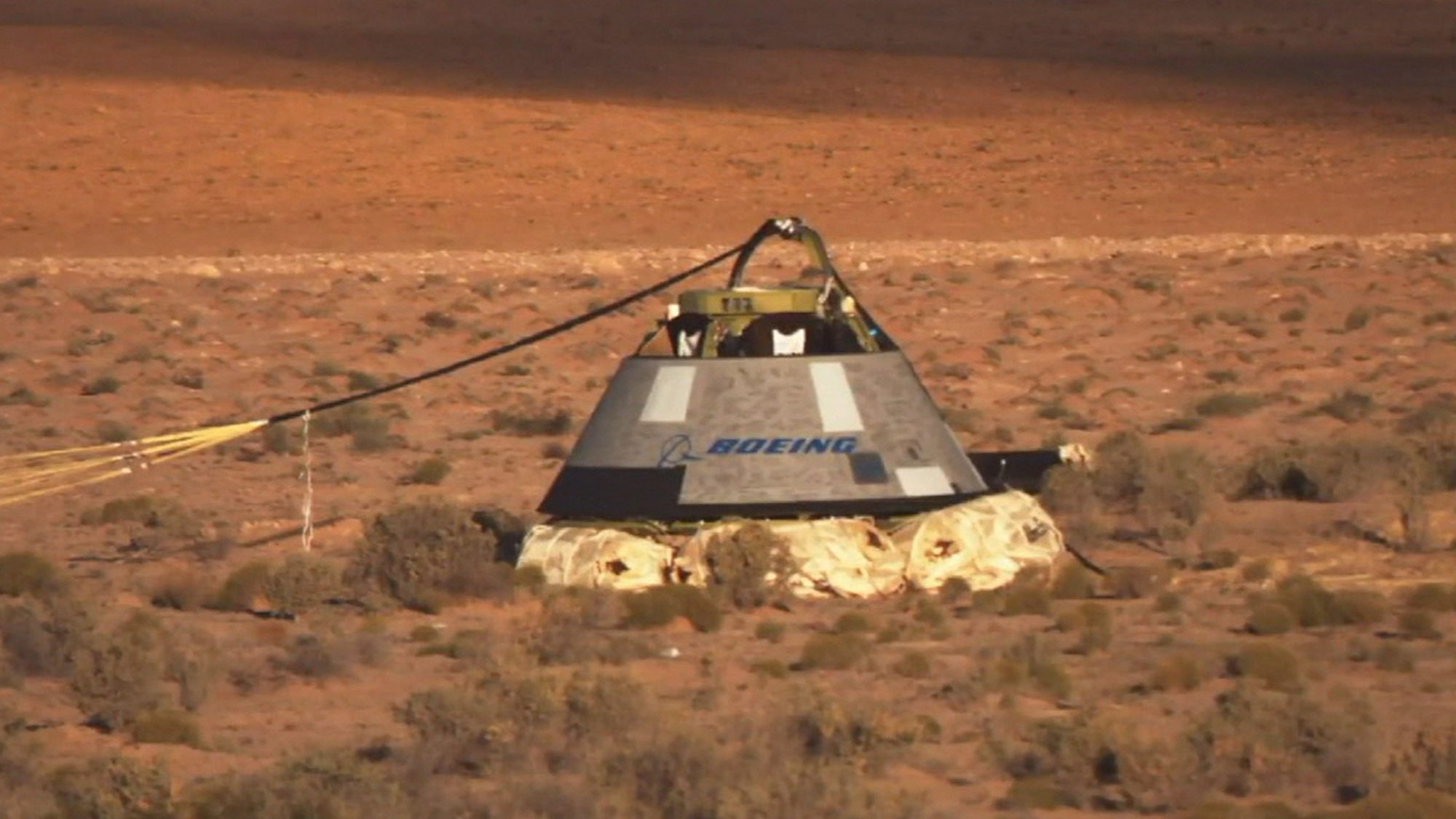
Boeing's CST-100 Starliner spacecraft sits on top of its airbags in the desert of New Mexico after a successful pad abort test.
Full Story: Boeing Tests Starliner Spacecraft's Launch Abort System for Rocket Emergencies
- Crew Dragon and Starliner: A Look at the Upcoming Astronaut Taxis
- NASA Rehearses Astronaut Launch and Rescue with SpaceX, Boeing (Photos)
- Boeing Astronaut Reveals Mission Patches for Starliner Flight Tests
Email Hanneke Weitering at hweitering@space.com or follow her @hannekescience. Follow us on Twitter @Spacedotcom and on Facebook.
Get the Space.com Newsletter
Breaking space news, the latest updates on rocket launches, skywatching events and more!
Join our Space Forums to keep talking space on the latest missions, night sky and more! And if you have a news tip, correction or comment, let us know at: community@space.com.

Hanneke Weitering is a multimedia journalist in the Pacific Northwest reporting on the future of aviation at FutureFlight.aero and Aviation International News and was previously the Editor for Spaceflight and Astronomy news here at Space.com. As an editor with over 10 years of experience in science journalism she has previously written for Scholastic Classroom Magazines, MedPage Today and The Joint Institute for Computational Sciences at Oak Ridge National Laboratory. After studying physics at the University of Tennessee in her hometown of Knoxville, she earned her graduate degree in Science, Health and Environmental Reporting (SHERP) from New York University. Hanneke joined the Space.com team in 2016 as a staff writer and producer, covering topics including spaceflight and astronomy. She currently lives in Seattle, home of the Space Needle, with her cat and two snakes. In her spare time, Hanneke enjoys exploring the Rocky Mountains, basking in nature and looking for dark skies to gaze at the cosmos.









